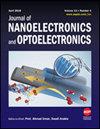Design of Light Emitting Diode-Based Fiber Optic Current Sensor and Its Application in Pollution Flash Prevention in Digitalized Substations
IF 0.6
4区 工程技术
Q4 ENGINEERING, ELECTRICAL & ELECTRONIC
引用次数: 0
Abstract
Prevention of pollution flash in electrical equipment in digitalized substations and transmission lines has always been a crucial part of power operation. In order to prevent pollution flash, it is essential to detect the contamination of electrical equipment. The measurement of leakage current is a fundamental aspect of preventive pollution flash work in electrical equipment. Applying fiber optic current sensors to online monitoring systems in the power system offers advantages such as resistance to harsh environments, immunity to electromagnetic interference, and resistance to chemical corrosion. This study designs a unidirectional half-wave fiber optic current sensor based on Light Emitting Diodes (LED) for selectively observing the positive and negative half-cycles of leakage current. Due to the light emission and unidirectional conduction characteristics of LED, with a well-designed circuit, LED performs photoelectric conversion on the current, allowing the sensor to selectively measure the positive and negative half-cycles of leakage current. Subsequently, a combination circuit of silicon detectors and amplifiers is used to complete the photoelectric conversion, facilitating voltage signal measurement. In experiments, the response of the unidirectional half-wave LED fiber optic current sensor reached 37.8 mV/mA, with a detection bandwidth range between [1.2 kHz, 9.8 kHz]. In leakage current tests, using the leakage current of insulators as a reference, experiments were conducted using the voltage boosting method. As the applied voltage increased, the leakage current displayed on the sampling resistor increased, and the measurement waveform indicated that the sensor could correctly select the unidirectional half-wave. In leakage current and salt density tests, the designed fiber optic sensor accurately reflected the exponential relationship between insulator leakage current and contamination, demonstrating the practical value of the designed fiber optic current sensor.基于发光二极管的光纤电流传感器的设计及其在数字化变电站防污闪中的应用
防止数字化变电站和输电线路中电气设备的污染闪络一直是电力运行的重要组成部分。为了防止污染闪络,必须检测电气设备的污染情况。测量泄漏电流是电气设备污染闪络预防工作的一个基本方面。将光纤电流传感器应用于电力系统的在线监测系统具有耐恶劣环境、抗电磁干扰、抗化学腐蚀等优点。本研究设计了一种基于发光二极管(LED)的单向半波光纤电流传感器,用于选择性地观测泄漏电流的正半周和负半周。由于发光二极管具有发光和单向传导的特性,通过精心设计的电路,发光二极管可对电流进行光电转换,从而使传感器能够选择性地测量泄漏电流的正负半周。随后,硅探测器和放大器组成的组合电路完成光电转换,从而方便电压信号的测量。在实验中,单向半波 LED 光纤电流传感器的响应达到 37.8 mV/mA,检测带宽范围在 [1.2 kHz, 9.8 kHz] 之间。在泄漏电流测试中,以绝缘体的泄漏电流为参考,采用升压法进行了实验。随着施加电压的增加,采样电阻上显示的泄漏电流也随之增加,测量波形表明传感器能正确选择单向半波。在泄漏电流和盐密度测试中,所设计的光纤传感器准确反映了绝缘体泄漏电流与污染之间的指数关系,证明了所设计的光纤电流传感器的实用价值。
本文章由计算机程序翻译,如有差异,请以英文原文为准。
求助全文
约1分钟内获得全文
求助全文
来源期刊

Journal of Nanoelectronics and Optoelectronics
工程技术-工程:电子与电气
自引率
16.70%
发文量
48
审稿时长
12.5 months
 求助内容:
求助内容: 应助结果提醒方式:
应助结果提醒方式:


